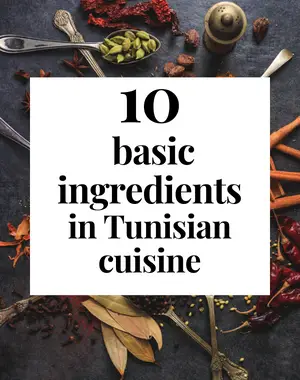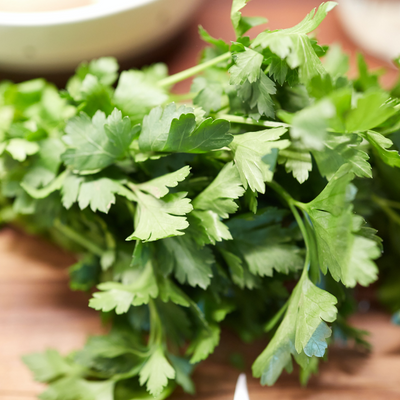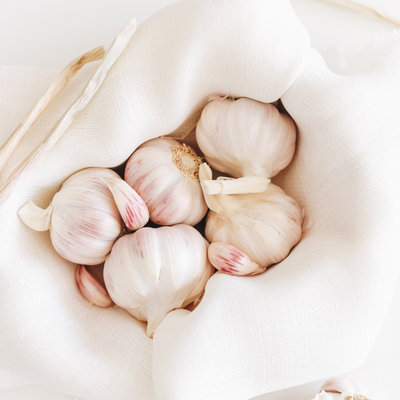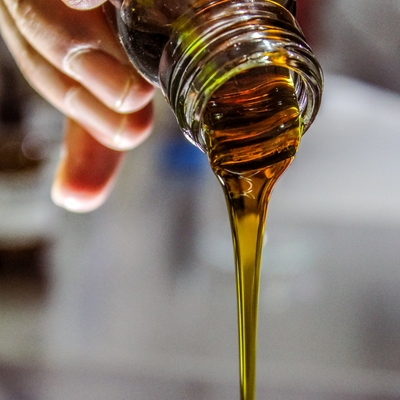Do you have a plan to cook traditional Tunisian food? I have listed ten basic Tunisian food ingredients. The secret of delicious Tunisian food is the fresh and local ingredients. Get the products listed below in your pantry. In no time, you have a delicious meal on the table.
10 basic Tunisian food ingredients
- Harissa
- Couscous
- Parsley
- Semolina
- Tomato paste
- Spices
- Garlic
- Green pepper
- Eggs
- Olive oil

Harissa
Harissa is a Tunisian hot chili pepper paste made of dried chili peppers, olive oil, garlic, salt, caraway, and coriander. The greatest thing about harissa is that it is a very versatile ingredient. It works perfectly in soups, stews, spreads, marinades, pasta, and salads.
During your stay in Tunisia, you will get to know this hot chili paste. In many dishes, harissa brings spiciness and a richer taste to the food. It’s one of the basic ingredients in Tunisian cuisine. Curious to know nine ways to use harissa in your cooking? Click here.
Harissa is an ingredient in: Kafteji, Omek Houria, Lablabi, and Ojja.
Couscous
Tunisian’s national dish is couscous, also known as kosksi or kousksi. These tiny steamed semolina balls are the key ingredient in many Maghreb countries. But still, every North-African country has its own way of cooking it. In Tunisia, couscous is usually served with a delicious tomato-based sauce made of meat, chicken, fish, or vegetables.
Couscous is used in: Tunisian couscous and Masfouf.

Parsley - Tunisian food ingredients
Bright green herb parsley is full of vitamin K and A. It has a clear, slightly bitter, and earthy taste. There are two types of parsley: curly leaf parsley, also known as French parsley, and flat-leaf parsley, also called Italian parsley.
I have seen only fresh Italian parsley used in Tunisian kitchens. It brightens and enhances the flavor of dishes. In addition, parsley is a typical garnish on top of the food.
How to use parsley: Mosli, Brik, Market Batata, and Fricasse.
Semolina
Semolina is a flour made of durum wheat. It has a high gluten content that creates a very elastic but not sticky dough. For this reason, it is a perfect ingredient in making pasta, couscous, and bread. Semolina has a light yellowish color, and it can be purchased in different coarseness from extra coarse to fine. In Tunisia, semolina is essential in making traditional mlawi and many bread doughs.
How to use semolina: Mlawi, Batbout, Tunisian semolina soup, and sweet harissa cake.
Tomato paste - Tunisian food ingredients
You will find a big can of tomato paste in every Tunisian home. It’s an essential ingredient in tomato-based sauces, stews, couscous, pasta, and soups. Actually, it’s a very convenient product to have at home. Instead of using a can of chopped tomatoes, try to substitute it with tomato paste and water. Of course, this won’t work in every dish, but you can make delicious tomato sauces like this.
Try tomato paste in: Market Batata, Chorba, Djerbian rice, and Makrouna.
Spices
In Tunisia, you will run into many spice and herb merchants. It is a perfect opportunity to fill up your spice cupboard: there is plenty of options to choose from, and prices are very reasonable.
The traditional Tunisian food contains a lot of spices. The most common seasonings are tabil/tabel, kamoun, paprika, chili, turmeric, mint, coriander, and caraway. The first herb I recommend buying is dried mint. Both fresh and dried mints are very typical ingredients in Tunisian cuisine. If you plan to cook Tunisian cuisine at home, you will need tabil and kamoun. Here is a list of the popular Tunisian spices. Read it through to learn how to use seasonings in Tunisian cuisine.
Try to add typical Tunisian spices in: Mosli, Djerbian rice, Hlalem, and Osben.

Garlic - Tunisian food ingredients
Healthy and aromatic garlic is one of the most typical ingredients in Tunisian food. I could say that most Tunisian dishes contain garlic, but there are some exceptions. It does not only add flavor, but it also has many health benefits. For maximum flavor and health benefits, avoid buying pre-chopped garlic. Maybe you have noticed that the strength of garlic’s flavor depends on how you cut it. Next time chop, mince, slice, smash or grate garlic, and see how the taste changes.
Boost the following dishes with garlic: Kafteji, Kamounia, Makrouna, and Chorba.
Green pepper
Tunisian green pepper looks similar to Anaheim pepper but has a spicier taste. It’s a typical ingredient in Tunisia. For example, the famous green pepper salad, Slata Mechouia, is made of grilled green peppers. In addition, Tunisians like to add peppers to couscous, pasta, Nwasser, and salads.
Use green pepper in: Slata Mechouia, Nwasser, Molokhia, and stuffed peppers.
Eggs - Tunisian food ingredients
Looking for new ways to use eggs? Tunisian cuisine is perfect for finding new ways to use eggs. It’s amazing how many dishes contain eggs. I am talking about savory dishes, not sweet pastries. You will need at least a half dozen eggs to make delicious Tunisian Tajine. How about ojja? Ojja is a Tunisian version of the world-famous Shakshuka. Not to forget, crispy and deep-fried Brik with a runny egg inside. Yummy, yummy, and yummy.
A couple of ways to use eggs: Tajine, Ojja, Brik, Nwasser, and Kafteji.

Olive oil
Tunisia is one of the world’s top olive oil producers, and their olive oils have won medals in international competitions. Tunisian olive oil is super delicious, rich in aroma, and has an almost creamy texture. There are many good reasons to purchase a bottle of olive oil. Firstly, it is famous for its health benefits and for treating cholesterol, obesity, heart health, inflammation, etc. Secondly, it’s a must-have cooking product in every kitchen. Olive oil is used almost in all preparation of Tunisian dishes.
Add a spoonful of olive oil to: Tunisian salad, Slata Mechouia, Mloukhiya, and Tunisian plate.
What are the stable ingredients of your kitchen? Any similarities to these ten essential Tunisian food ingredients? Let me know your thoughts in the comments. See you again next week!
